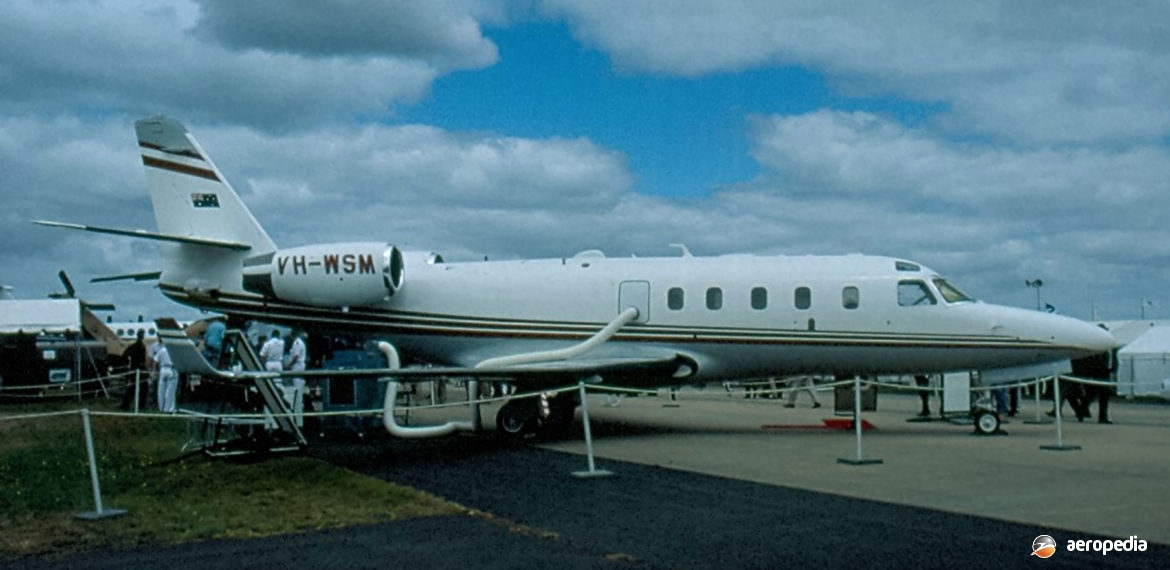Photograph:
IAI 1125 Astra SPX VH-WSM (c/n 123) of Pearl Aviation at the Australian International Air Show at Avalon, VIC in 2001 (David C Eyre)
Country of origin:
Israel
Description:
Business and executive jet
Power Plant:
Two 3,700 lbst Allied Signal (Garrett) TFE731-3C-200G turbofans
Specifications:
- Wingspan: 16.05 m (52 ft 8 in)
- Length: 16.94 m (55 ft 7 in)
- Height: 5.54 m (18 ft 2 in)
- Wing area: 29.4 m² (316.5 sq ft)
- Max cruising speed: 858 km/h (533 mph)
- Max operating speed at sea level up to 7,620 m (25,000 ft): 673 km/h (418 mph)
- Stalling speed flaps and undercarriage down: 171 km/h (106 mph)
- Max rate of climb at sea level: 1,112 m/min (3,650 ft/min)
- Range with four passengers and reserve: 5,215 km (3,240 miles)
- Service ceiling: 5,700 m (19,000 ft)
- Max certificated altitude: 13,715 m (45,000 ft)
- Empty weight: 5,999 kg (13,225 lb)
- Loaded weight: 10,659 kg (23,500 lb)
History:
The IAI 1125 Astra SP and SPX series was a descendant of the IAI Westwind, of which more than 440 examples were built. The prototype Astra 4X-WIN (c/n 4001), which was launched in October 1979 as the Model 1125, made its first flight on 1 September 1983 and subsequently entered production. Further variants were developed, including the Astra SP, launched in October 1989, and the Astra SPX announced in 1994.
The Astra SP differed from the initial variants in having a new interior, upgraded avionics with Collins digital autopilot, EFIS, and aerodynamic refinements which extended the range by 117 km (72 miles). The Astra SPX, the first of which 4X-WIX (c/n 073) flew on 18 August 1994, had winglets, Collins Pro-4 Avionics, and Allied Signal TPE731-40R-200G turbofans providing 4,150 lbst. At one stage a model known as the Galaxy was planned to be co-produced with Yakovlev of Russia. The SP had a crew of two and standard accommodation in a pressurised cabin for six passengers, with up to a maximum of nine.
First of the type in this region was an Astra SP VH-FIX (c/n 045) registered to Air Services Australia, imported to replace two Fokker F-28-1000s, and operated by Pearl Aviation on the calibration of aviation navigation aids. Purchased in the United States, it was flown to Germany for installation of equipment before entering service late in 1996.
Examples of the SPX, known as the C-38A, have been operated by the United States Air National Guard.
A further example registered in Australia was VH-WSM (c/n 123), an Astra SPX, which was operated by Star Aviation of Hamilton Central in Queensland and registered to Pearl Aviation Australia of Darwin, NT. It was exported to Canada in May 2005 when it was replaced by a Falcon 2000EX.

